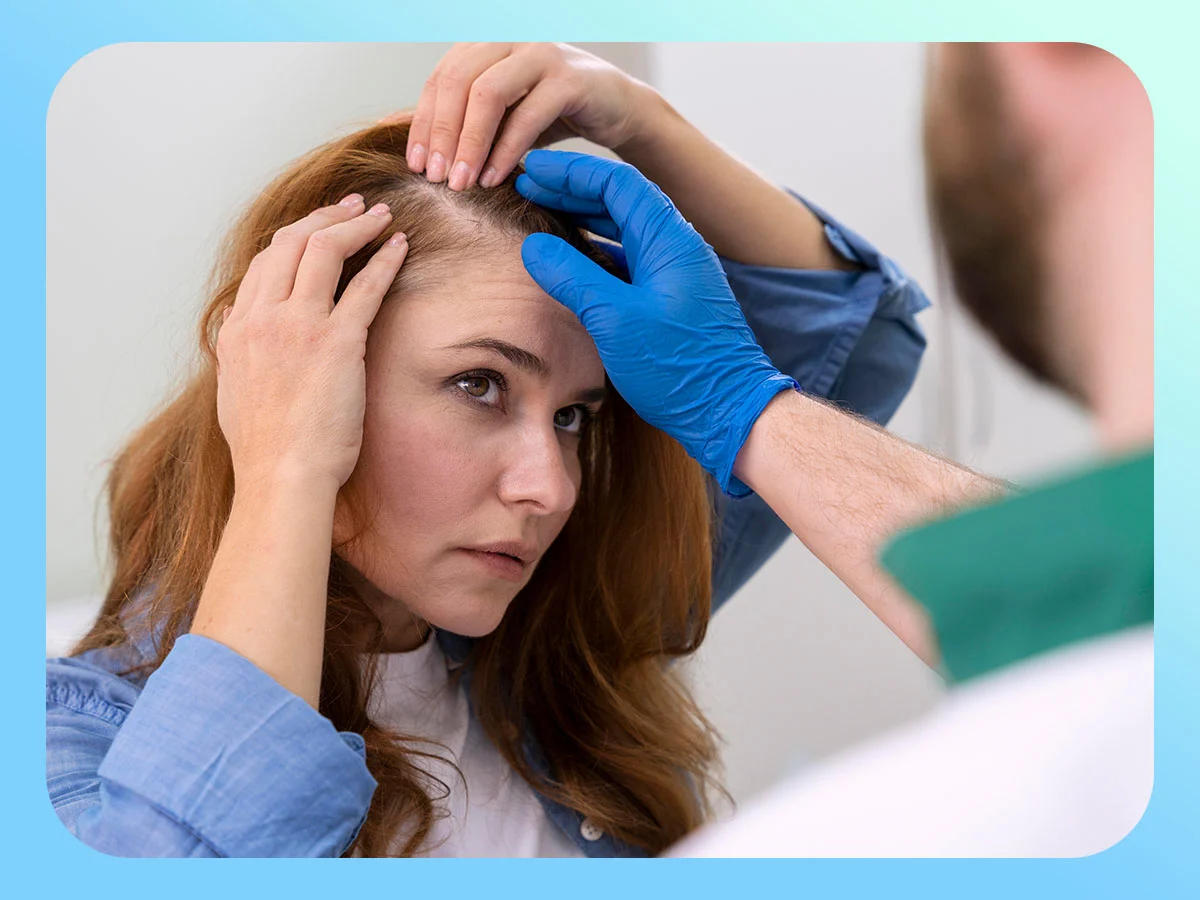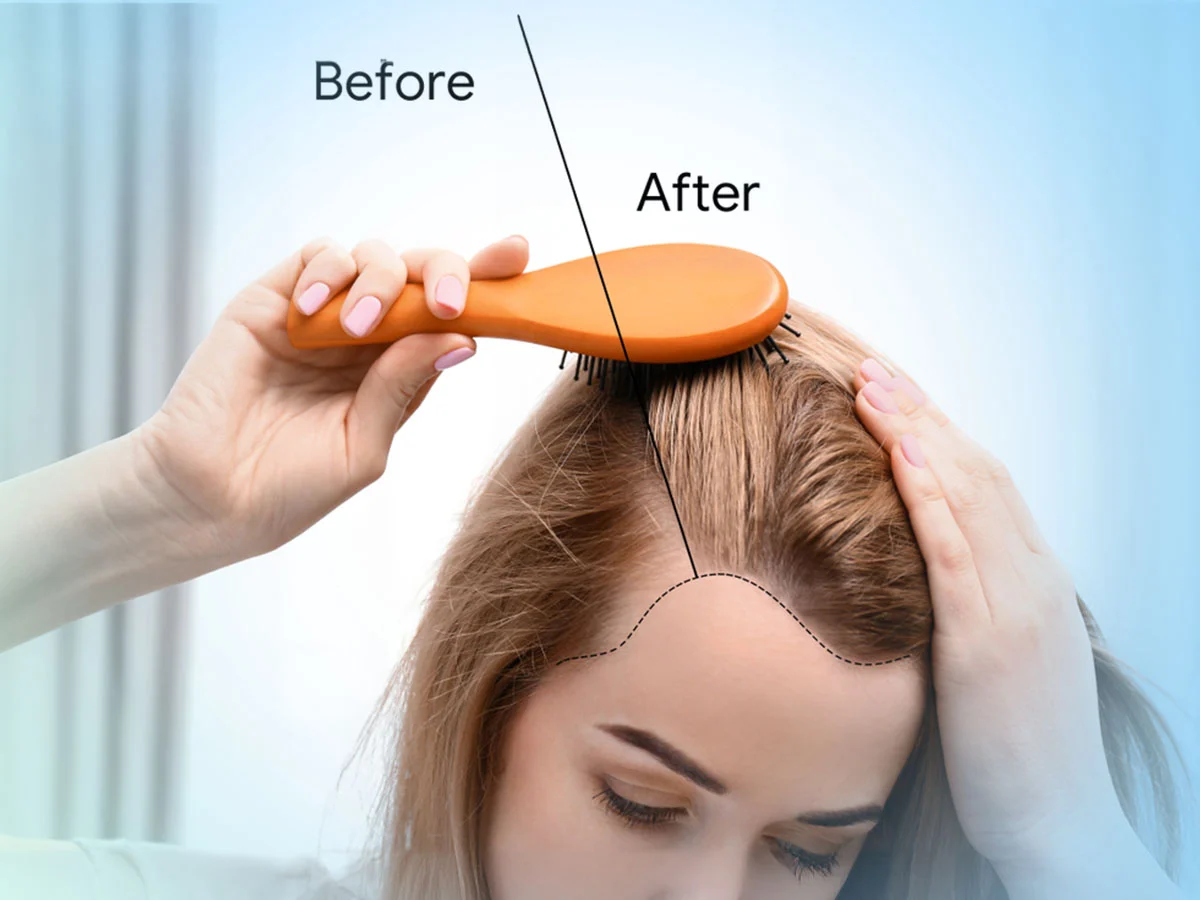Hair Transplant Turkey 2024: Your Guide to the Best Clinics and Surgeons
Hair Transplantation Basics and Techniques:
Before considering a hair transplant, you need to know its basics.
- Hair Transplant is a minor cosmetic procedure designed to treat hair loss, and baldness by restoring hair follicles to create a fuller, natural appearance by adding density to the hair.
- The Basics: Hair Transplant surgery is based on extracting healthy hair follicles from the donor site and implanting them as grafts at the recipient area to generate a fuller look. This procedure is considered a long-term solution for hair loss and thinning.
- Hair transplant surgery can be performed in various methods and techniques:
- Follicular Unit Extraction (FUE)
- Follicular Unit Transplantation (FUT)
- Direct Hair Implantation (DHI)
FUE vs. FUT vs. DHI Choosing the Right Method for You:
Knowing which Method is right for you is half the job, choosing the correct method will increase the success rate of your hair restoration surgery.
- Follicular Unit Extraction (FUE): Hair Transplant method where the surgeon extracts individual hair follicles from a donor area using a specialized punch tool, leaving behind almost no traces of extraction.
- FUE is the perfect treatment for hair thinning
- FUE is designed for smaller hair grafts.
- FUE is suitable for individuals who prefer to keep their hair short since the tiny, scattered scars are less visible with shorter haircuts.
- FUE requires a shorter recovery period compared to other methods.
- FUE offers a more natural hairline than other methods due to its precise control over the angle, direction, and density.
- Follicular Unit Transplantation (FUT): FUT is based on harvesting a strip of tissue from the donor area, which is then divided into individual follicular units to transplant in the recipient area. FUT would leave a linear scar at the donor site which can be well-hidden by the remaining hair at the donor area.
- Surgeons choose FUT for its ability to extract a high number of grafts in a single session.
- FUT demands a longer recovery time due to the need for suture removal, the recovery period is within 10-14 days.
- Direct Hair Implantation (DHI): Well, it is exactly as it sounds, the hair follicles are extracted from the donor site and directly implanted graft at the recipient area. The process of the transplant is performed using an Implanter Pen, a pen with a hollow structure shaped almost like a needle, the unique Implanter pen is operated to extract the hair follicles and implant the grafts.
- DHI leaves the donor area with almost no scarring due to the smooth direct process.
- DHI requires a short recovery period with reduced discomfort.
- DHI can do wonders for different hair loss patterns, with natural hairline appearance.
The Hair Transplant Procedure: A Step-by-Step Overview:
- Consultation and Assessment: The Surgeon would check out the patient’s hair loss pattern, and learn about the patient’s medical history. Then the doctor will discuss with the patient which Hair transplant procedure is appropriate for their condition.
- Preparation: The doctor would draw the hairline design according to the shape and features of the patient to create a natural hairline. Then the specialist would check the status of the donor area and
- Anesthesia Administration: The Hair transplant surgery is performed with Local Anesthesia to make it a pain-free experience. Before Extracting the Grafts, a specialist will administer the Local Anesthesia to the donor and recipient area.
- Graft Extraction: The process of Graft extracting depends on the method used. In FUT a thin strip of tissue containing hair follicles is harvested from the donor area while in FUE, individual hair follicles are carefully extracted from the donor area using a specialized punch tool.
- Graft Preparation: The harvested follicles are delicately dissected under a microscope, separating them into grafts containing one to four hair follicles.
- Recipient Site Creation: the surgeon creates tiny incisions in the recipient area, strategically considering the angle, direction, and density of hair growth.
- Graft Implantation: Individual grafts are attentively implanted into the recipient sites according to the approved hairline design.
- Post-Operative Care and Instructions: The patient will receive detailed post-operative care instructions, including information on managing swelling, avoiding certain activities, and prescribed medications.
How to Choose the Right Surgeon for Your Hair Transplant:
- Selecting the right surgeon for your hair transplant is a crucial decision and one you shouldn’t take too easily.
- Who is the right Hair Transplant Surgeon for You:
- Holds a Medical Degree with Board Certification. (A Must, Only medically trained individuals can perform Hair Transplants).
- Great Years of experience and training. (Having a Good amount of experience can increase the success rate of the hair transplant)
- Uses Realistic Before-After Photos. (No Photoshop, it’s important to check before-after photos of cases like yours to create a realistic expectation of hair transplant results)
- Received excellent reviews from patients. (Previous patients’ experiences can tell you if the clinic is up to standards or not)
- Ready to answer all of your questions and that you feel comfortable with. (Feeling comfortable with your surgeon will calm your nerves towards the procedure)
- Uses the newest technology and is updated with new standards (Applying new practices and trends can speed up the recovery process and evaluate the success rate)
Hair Transplant Costs: Pricing Factors:
Yes, Hair Transplant is a minor procedure but it is still a medical surgery that needs different elements to complete it. Here is a list of:
- The Costs: Here is a breakdown of the Full Price tag:
- Consultation Fees.
- Procedure Type: The type of hair transplant plays a major role in the pricing, for example, FUE, being a more complex and time-consuming process, often comes with a higher price tag compared to FUT.
- Number of Grafts Needed: The status of hair loss can determine the number of Grafts, and accordingly the price will change.
- Surgeon’s Fee: Of course, an expert Surgeon with excellent experience would ask for a pricey fee than a new surgeon with almost no experience.
- Anesthesia and Operating Room Costs.
- Follow-Up Appointments.
How to Prepare Your Hair Transplant: Essential Tips:
- Following those helpful tips can speed up the recovery process
- Massaging your scalp for a minimum of 10 minutes daily before the surgery would increase the Blood flow in the scalp.
- Should stop Smoking 2 days before the procedure to protect the hair grafts.
- Cut alcohol from your diet 3-4 days before the surgery.
- Maintain a healthy diet by taking multivitamins.
- Avoid stressful activities, and try not to raise your blood pressure.
Hair Transplant Post-Procedure Care: Ensuring Optimal Results After Hair Restoration:
- With simple measures, you can increase the success rate of your hair transplant
- Take any prescribed medications, such as antibiotics or anti-inflammatory drugs, as directed by your surgeon after your hair surgery.
- Avoid touching, scratching, or rubbing the transplanted area to prevent dislodging grafts.
- Follow the instructions particularly the cleansing routine to keep the recipient and donor areas clean.
- Protect the scalp area from direct sunlight by walking under an umbrella or
- Attend all scheduled follow-up appointments with your surgeon.
Hair Transplant Surgery: the Risks and Complications:
- With every medical procedure, there is a risk of complications and it’s essential to know the Good and the Bad about Hair transplant
- The Complications:
- Infection: With hair extraction and implantation, tiny holes are left in the scalp area. Yes, it’s rare to get an infection from Hair transplant surgery but still, there is a chance.
- Bleeding: You should expect some bleeding during the Hair Transplant but there is a small chance of excessive bleeding, patients are asked to avoid using blood thinners before the surgery.
- Swelling: Swelling is a common side effect of the surgery mostly around the forehead and eyes. To reduce, try using Cold compresses.
- Numbness or Lack of Sensation: Sometimes after the surgery, the patient would feel numbness around the donor or recipient area which is a normal side-effect as a result of using Anesthesia.
- Shock Loss: Shock loss is sudden hair loss at the recipient or donor site, it’s a temporary typical outcome of the Hair transplant. Don’t worry the hair will regrow within a few weeks!
- Allergic Reaction: It’s a rare complication of the procedure, but the medical staff should be prepared. All patients should list their allergies and undergo testing.
Hair When Will You See the Results? Understanding Timelines and Expectations Post-Transplant:
- It’s important to understand that the first look post-transplant will not show the perfect image of a fuller natural hairline.
- Your scalp and hair will go on a journey to reach the final result with a fuller and better hairline.
- The journey begins with :
- The Shedding Phase: is when implanted hair follicles fall out, which is the natural process.
- The Resting Phase: is when The transplanted follicles enter a resting phase, preparing for the next growth cycle.
- Immediate Post the Hair Transplant: The first look includes redness around the transplanted area and tiny scabs. In some cases, there might be some swelling.
- First Weeks: The recipient area will undergo two phases
- Weeks 4-6: Early signs of new hair growth may become noticeable, but it’s subtle at this phase.
- Months 2-3: Visible hair growth, the new hairs tend to be fine and may not yet have reached their full length.
- Months 4-6:The transplanted hair starts to look more mature and natural. The density gradually improves.
- Months 6-9: Hair continues to grow, and the coverage improves over time creating a fuller look.
- Months 9-12: Some patients might see the final result of the Hair transplant
- After One Year: Hair continues to mature, and grow making the final results more apparent.
Hair Transplantation in Turkey: Quality, Cost, and Reputation:
- In the last decade, Turkey earned a recognizable spot in the industry of plastic and cosmetic surgery with individuals traveling from all around the globe to undergo cosmetic procedures.
- It’s hard to beat Turkey in the game of Cosmetic Tourism, with affordable prices, high-quality procedures, and a strong reputation no one is stopping Turkey from winning.
- The quality:
- Clinics in Istanbul invest in outstanding facilities and feature advanced technologies for hair transplant procedures.
- Only Board-certified and experienced surgeons can perform procedures, ensuring quality outcomes.
- Clinics in Turkey are known for maintaining high standards of healthcare which include a high level of hygiene and attention to detail
- Cost:
- Turkey is famous for offering competitive prices for hair transplant procedures, making it an attractive destination for individuals seeking cost-effective solutions.
- Many clinics provide all-inclusive packages covering the procedure, accommodation, transfers, and post-operative care at affordable prices, which is impossible to find outside of Turkey.
- Reputation:
- Turkish clinics follow strict regulations and rules by the Turkish government.
- Many Clinics are accredited by national and international healthcare organizations.
- Distinguished clinics provide comprehensive post-operative care instructions and follow-up appointments to monitor recovery.
- Many Turkish clinics have received international awards and recognition for their contributions to the field of hair transplantation.
Latest Innovations and Improvements in Hair Transplant Technology:
- The industry of Hair Transplant is constantly innovating and changing to improve the outcome of Hair transplant surgery.
- The latest Innovations and Improvements:
- Robotic Hair Transplantation: A Robotic system using robotic arms to precisely harvest grafts from the donor area during the FUE hair transplant. The use of robotics enhances the precision of graft extraction, potentially reducing trauma to the donor site and improving the overall efficiency of the procedure.
- SmartGraft Technology: The usage of robotics enhances the precision of graft extraction, potentially reducing trauma to the donor site and improving the overall efficiency of the procedure.
- Platelet-Rich Plasma (PRP) Therapy: PRP therapy involves the extraction and concentration of platelets from the patient’s blood, which is then injected into the scalp to stimulate hair growth and enhance the healing process.
Long-Term Hair Care Post-Transplant: Tips for Maintenance:
- Long-term care post-transplant is essential to maintaining the results of a hair transplant. Quick tips to maintain the results:
- Gently Wash your hair and scalp.
- Stay away from styling products with harsh chemicals.
- Protect your scalp from direct sunlight, especially during the summer.
- Maintain a balanced diet by using supplements and multivitamins.
- Daily gently Massage your scalp.
- Embrace a positive mindset.
- Avoiding Smoking and Excessive Alcohol
- Moderate Exercise while avoiding Excessive Sweating.
The Future of Hair Transplantation: Trends and New Developments:
- The hair transplant field is continuously evolving and creating innovative approaches to stop hair loss and baldness.
- The new trends and developments:
- Stem Cell Therapy: Stem cell therapy has done wonders in fighting disease and replacing damaged cells. And now, Stem cell therapy can be used in hair transplants. Stem cell therapy may help in encouraging hair follicle regeneration and boosting hair growth.
- 3D Bioprinting: Using customizable 3D Bioprinted hair follicles will increase the precision of the placement and the number of grafts used in a Hair Transplantation
- Gene Therapy: Gene therapy holds a role in modifying or targeting genetic factors contributing to hair loss.
- Artificial Intelligence (AI) Integration: AI would assist by analyzing the factors of Hair transplant such as the donor area, the hairline design, and where to place the grafts. An excellent tool to speed up the process.
- Hair Cloning: The research aims to use cloning to multiply healthy hair follicles at the lab to overcome the issue of small donor areas.
Genetics and Hair Transplant: How Does Heredity Affect the Outcomes?:
- The simple answer is YES, genetics can affect the outcome.
- Understanding how heredity influences the success and longevity of the procedure is crucial for managing expectations and planning for realistic results.
- Graft survival rates are influenced by the genetic characteristics of the transplanted hair.
- Surgeons assess family history and genetic markers to make predictions about future hair loss to decide which hair transplant method to apply and the number of grafts to implant
Hair Transplant Variations: Young Adults vs. Older Individuals:
- Young Adults would choose to receive a hair transplant to limit receding hairline to keep a natural youthful appearance to match their age.
- Young Adults may experience less discomfort during recovery because of their Good health and healthy habits.
- Older Individuals resort to hair transplants to control their substantial hair loss and baldness pattern.
- Older Individuals may come across a longer recovery phase and presume a slightly higher risk of complications
The Role of Nutrition and Lifestyle in Hair Transplant Success:
- The nutrition and lifestyle of the individual significantly influence the healing process, graft survival, and condition of hair. They are a major factor in achieving a successful hair transplant.
- Small changes in the patient’s lifestyle can speed up the recovery process and prolong the good results.
- Avoid direct sun exposure, especially during the summer. Use Hats and Sunblocks to protect the scalp.
- Embrace a stress-free lifestyle by practicing yoga, or mindfulness and using destress techniques. Did you know that Chronic Stress can contribute to hair loss?
- Consume supplements and multivitamins such as Biotin, vitamin D, and omega-3 to advance hair growth and health.
- Having a healthy daily water intake, and being well-hydrated can boost the healing process and maintain healthy hair.
Exercise after Hair Transplant: Guidelines and Restrictions Post-Procedure:
- Having a healthy lifestyle is essential to promote healthy hair and a smooth recovery
- Here is a list of the Dos and Don’ts:
- Take rest and skip your workout the first week after the Hair transplant. Avoid any activities that may cause trauma to your hair grafts and scalp.
- Avoid sweating and overheating, excessive sweating could increase the risk of infection during the first week of the recovery period. Limit your time at the steam room and the sauna to escape overheating.
- Gently wash your hair and scalp, don’t use vigorous movements you can easily pull the grafts.
- After 2 weeks of the hair transplant surgery, you could lightly use stationary biking and do low activities. You are not allowed to lift weights or engage in high-impact exercise.
- You should protect your scalp while exercising, by wearing a helmet or skipping workouts involving bouncing and head movements.
- After receiving the Okay from the surgeon you can return to your weights and heavy workouts. Just remember to protect your scalp and don’t wear tight headwear.
How to Maintaining Hair Density After Transplantation: Techniques and Advice
-
To maintain hair density you need to start your journey with Post-care.
- First, you need to follow the Post-care instructions to protect the hair grafts and to increase the success rate of the Hair transplant.
- Keep a healthy lifestyle and daily habits. Have a balanced diet rich with protein, vitamins, and minerals. Take Supplements and multivitamins such as biotin and omega-3 to support your hair health and growth.
- Daily massage your scalp but gently stimulate blood circulation to the hair follicles, make sure that the Surgeon clears you before massaging your scalp.
-
How to make your hair look healthy and shiny hair Transplant Techniques in Turkey 2024 : A Comprehensive Guide with Pros & Cons



.jpg)







